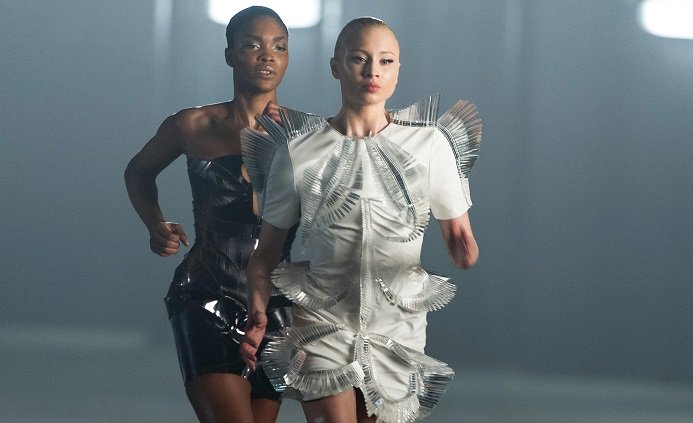Table of Contents
ToggleIntroduction: Understanding the Paradox of Fashion and Pain
“Fashion is pain.” This phrase has been used for years to describe the sacrifices people are willing to make in order to maintain a fashionable appearance. From the days of tightly-laced corsets to modern high heels that leave blisters on the feet, the idea of enduring discomfort for beauty is deeply ingrained in the fashion industry. But what is it about the world of fashion that makes us willing to endure physical pain, emotional distress, and even financial strain? And why do we continue to accept it, even in an age where comfort is championed?
In this article, we will explore the concept of “fashion is pain” in its historical and modern contexts, delve into the psychological aspects of fashion, examine the impact of trends on comfort, and offer advice on how to balance style with comfort. We’ll also take a look at how some fashion-forward individuals have managed to reconcile these two seemingly opposing forces.
The History Behind Fashion is Pain
Fashion has always been tied to the idea of sacrifice. Historically, many fashion trends were not only uncomfortable but could even be hazardous to health. For example, during the Victorian era, women wore tight corsets that restricted their breathing and movement. These corsets were meant to create the illusion of an hourglass figure, and despite their discomfort, they were seen as a symbol of status and beauty.
In the early 20th century, women’s fashion underwent dramatic changes, but the idea of “fashion is pain” remained. The introduction of high heels, which are now a staple in most women’s wardrobes, started to shape the perception of beauty through pain. High heels often caused blisters, pain in the toes, and back issues, but they were seen as a necessary accessory for a fashionable and professional look.
Fast forward to the present day, and the trend of sacrificing comfort for fashion continues to persist. Whether it’s wearing skinny jeans that squeeze the legs, stilettos that leave feet sore, or hairstyles that require hours to achieve, the idea that fashion is pain has become deeply embedded in the fashion culture.
The Psychological Side of Fashion and Pain
Psychologically, people have been conditioned to associate beauty with discomfort, a phenomenon that has roots in both societal expectations and the fashion industry itself. In a world dominated by social media influencers, models, and celebrities, the desire to fit in and look “perfect” often outweighs the importance of comfort. There is a common belief that to look good, you must suffer—whether that means enduring the pain of uncomfortable clothing or sacrificing time and energy to achieve a particular aesthetic.
A few factors contribute to this psychology:
- Social Pressure: People are influenced by the latest trends and the desire to keep up with those around them. Fashion is often seen as a status symbol, and in order to fit in or stand out, individuals are willing to endure discomfort.
- Media Influence: Celebrities and influencers often show themselves in highly fashionable (but impractical) outfits, creating a sense of aspiration among followers. Their endorsement of specific styles can make people feel pressured to follow suit, regardless of the physical cost.
- Cultural Norms: Different cultures have different standards of beauty, and in many cases, those standards require painful or uncomfortable beauty rituals.
How Fashion Trends Continue to Prioritize Style Over Comfort

While comfort has gained more attention in recent years, fashion trends continue to push boundaries and encourage discomfort for the sake of aesthetics. Some of the most popular modern fashion trends continue to sacrifice comfort for style, such as:
- High Heels: Despite a growing movement for comfortable footwear, high heels remain a popular choice for women looking to appear taller and more elegant. High heels contribute to foot pain, lower back pain, and long-term foot issues, yet they are still worn for formal events, professional settings, and even casual outings.
- Skinny Jeans: While slim-fit jeans have become a staple of modern fashion, they can cause discomfort by restricting movement and circulation. Many people also experience chafing or numbness after wearing them for long periods.
- Fast Fashion: The rise of fast fashion has contributed to disposable clothing that’s often cheap and poorly made, meaning it may not fit well or be made from breathable materials. The low cost of these garments often leads to more purchases, contributing to both financial strain and physical discomfort due to poorly designed clothing.
- Beauty Standards: From hair extensions to contouring makeup, the beauty industry is another area where comfort often takes a back seat. These beauty practices may involve hours of effort and uncomfortable products, but they are often seen as necessary to meet societal beauty expectations.
The Price of Fashion: Why We Continue to Pay It
Despite the clear discomfort that many fashion trends bring, people continue to embrace them. Why? The reasons are multifaceted, but they often boil down to self-expression, societal pressure, and the emotional rewards of feeling fashionable.
- Self-Expression: Fashion allows individuals to express their personality, creativity, and identity. The desire to stand out or make a statement often outweighs the physical discomfort associated with certain styles.
- Status Symbol: Fashion is often a sign of wealth, status, and belonging. High-end brands and designer items are associated with luxury, which leads people to invest in items that may not be the most comfortable, but reflect their social standing.
- Emotional Fulfillment: People may feel an emotional boost when wearing trendy or fashionable items. The act of dressing up can make someone feel confident, empowered, and attractive, despite the discomfort involved.
Striking the Balance: Fashion vs. Comfort

For those who are tired of sacrificing comfort for style, there are a few ways to strike a balance between the two. Below are some tips for wearing fashion-forward items without compromising your comfort:
- Choose Quality Over Quantity: Instead of buying cheap, ill-fitting clothes, invest in high-quality items that are both stylish and comfortable. Well-made pieces, such as tailored blazers or well-fitted shoes, offer both elegance and ease.
- Wear Comfortable Footwear: If you love heels but hate the pain, consider wearing wedge heels, block heels, or platform shoes, which offer more stability and comfort.
- Mix Casual with Chic: Opt for a mix of casual and formal pieces to balance out the look. Pairing a structured jacket with soft leggings or comfortable shoes can give you the best of both worlds.
- Embrace Athleisure: The rise of athleisure has provided a way for fashion lovers to wear stylish and comfortable outfits simultaneously. From chic leggings to stylish sneakers, athleisure offers both comfort and trendiness.
- Customize Your Style: Don’t be afraid to create your own fashion rules. If something doesn’t feel comfortable, don’t wear it. Fashion is about self-expression, and your comfort should always come first.
Fashion is Pain: The Modern-Day Reality
Today, many of us are still dealing with the age-old dilemma of fashion vs. pain. Whether it’s dealing with tight clothing, painful shoes, or hours of makeup application, the idea of enduring discomfort for the sake of fashion is alive and well. However, there are also plenty of opportunities to embrace both comfort and style, allowing us to look and feel good without sacrificing our well-being.
Table: Fashion Trends and Their Impact on Comfort
| Fashion Trend | Type of Discomfort | Possible Consequences | Alternatives to Consider |
|---|---|---|---|
| High Heels | Foot pain, back pain | Foot deformities, joint pain, blisters | Wedge heels, block heels, flat shoes |
| Skinny Jeans | Restricted movement, tightness | Circulation issues, skin irritation | Tailored pants, leggings, bootcut jeans |
| Corsets | Restricted breathing, posture issues | Internal organ pressure, fainting | Peplum tops, loose dresses |
| Tight Accessories | Skin irritation, headaches | Bruising, scalp pain | Looser scarves, more comfortable headbands |
| Beauty Treatments | Time-consuming, uncomfortable | Skin irritation, hair damage | Minimalist beauty routines |
Conclusion: Is Fashion Worth the Pain?
“Fashion is pain” remains a timeless phrase that encapsulates the sacrifices people are willing to make for the sake of looking good. While fashion often comes at a cost—whether physical, emotional, or financial—it’s important to remember that style doesn’t have to mean suffering. With modern innovations in both fashion and comfort, it’s possible to find a harmonious balance that allows us to embrace both style and comfort in our daily lives.
Disclaimer: The information provided in this article is for general informational purposes only. While we aim to offer valuable insights into the world of fashion and its impacts, individual experiences with fashion and comfort may vary. Always prioritize your health and well-being when selecting fashion items, and consult with a professional if you experience any discomfort or pain from certain clothing choices.
